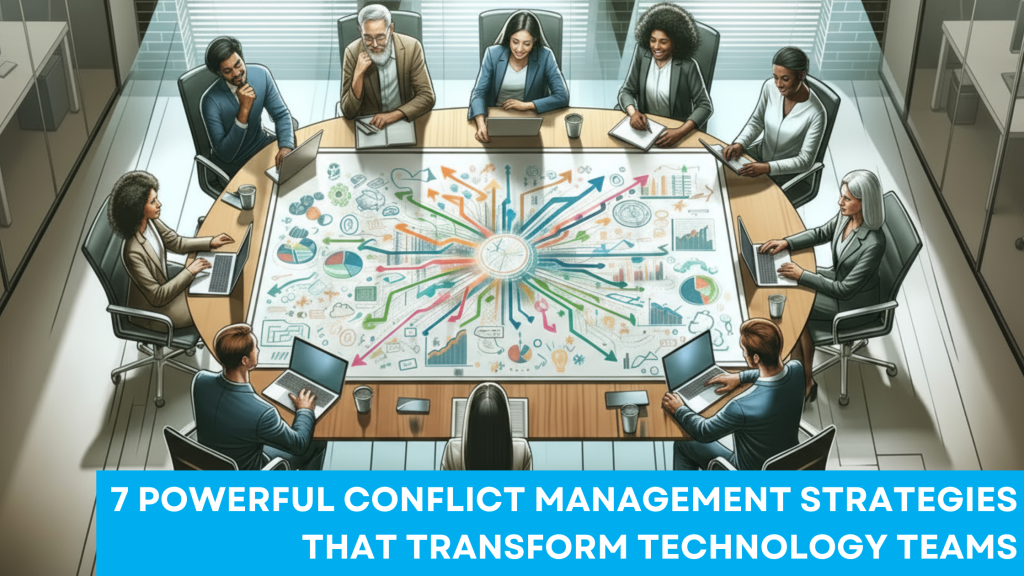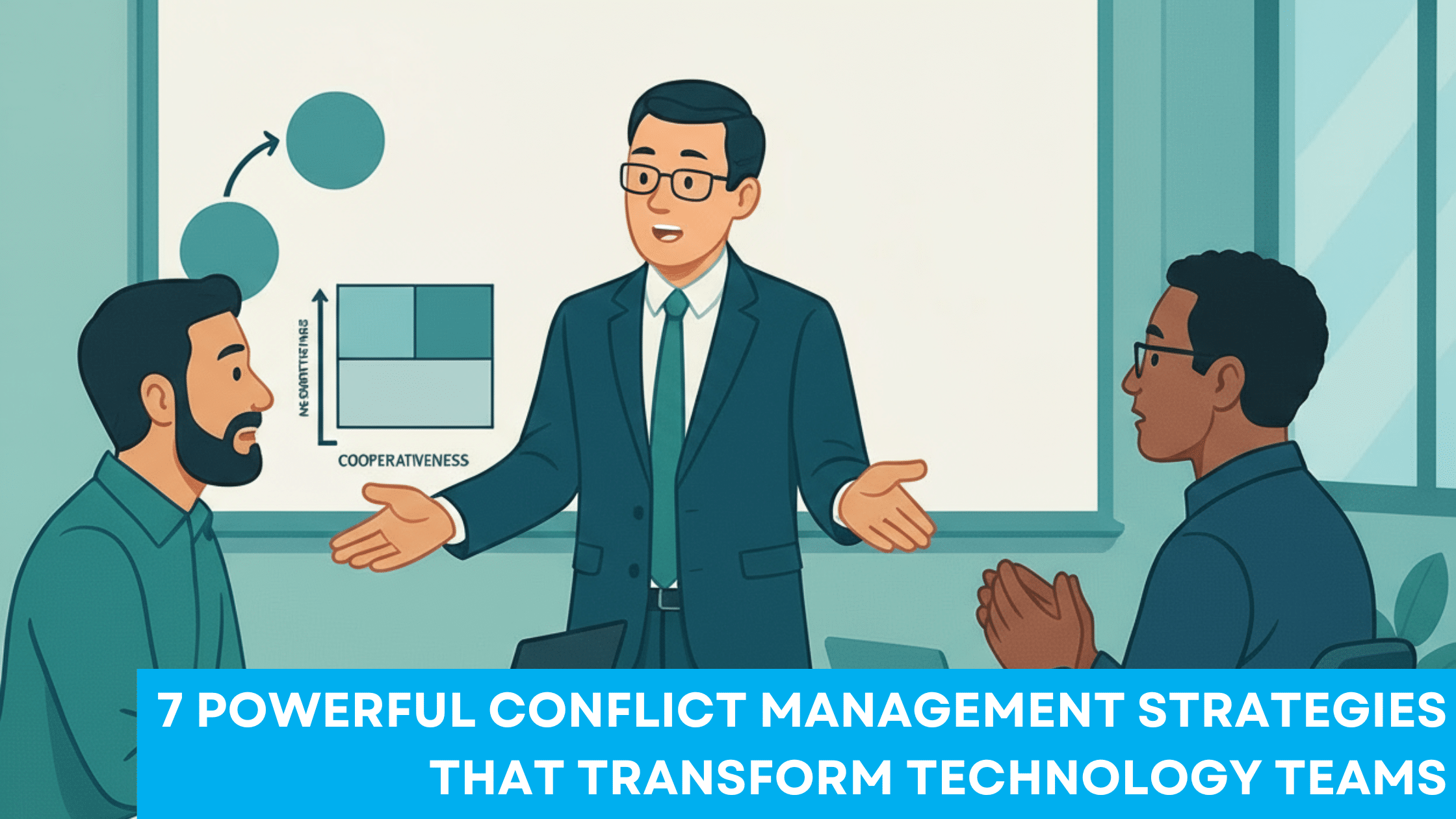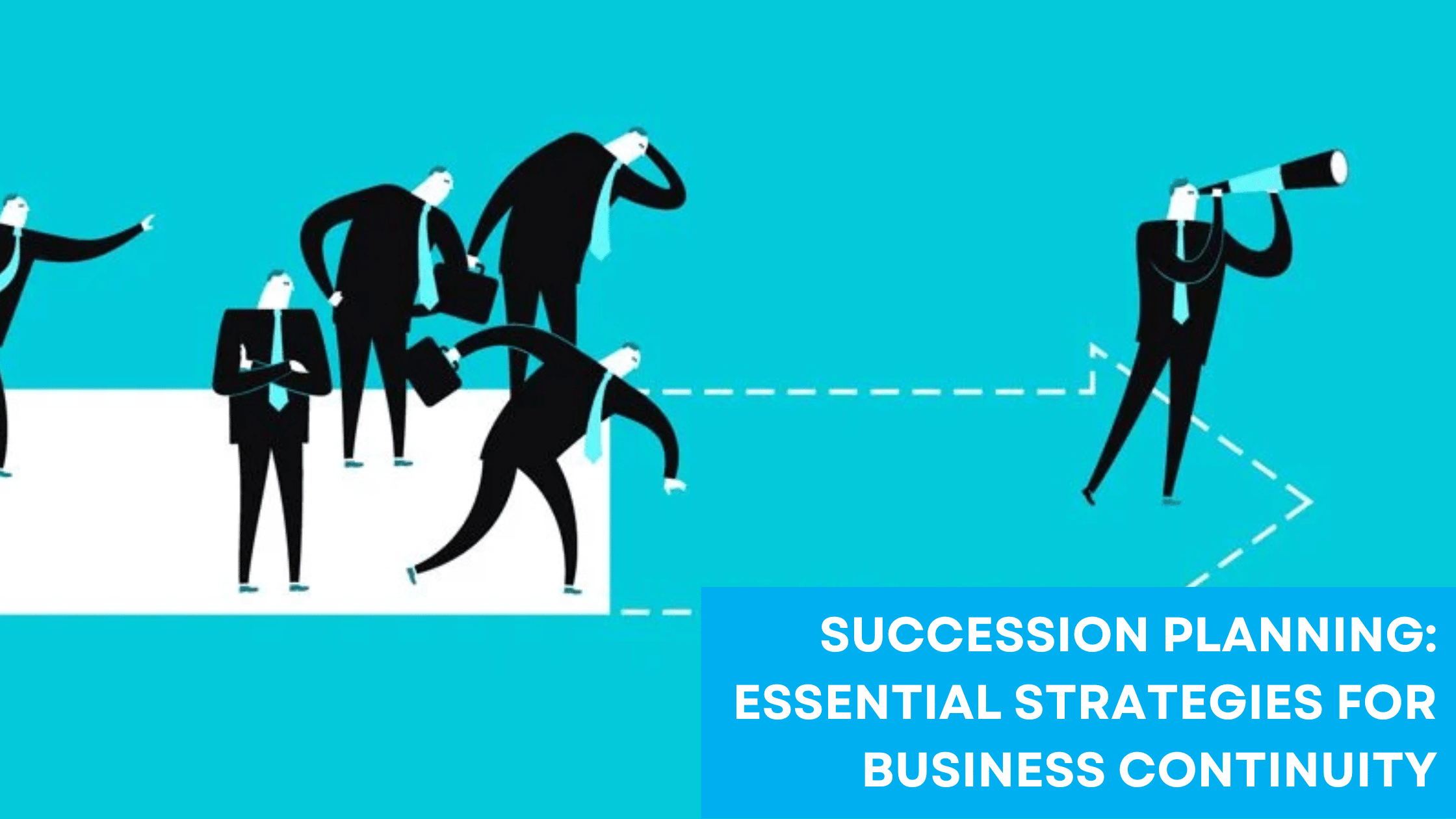Key Takeaways
- 85% of employees experience workplace conflict, with technology environments being particularly susceptible due to high-pressure deadlines and complex technical decisions
- The conflict resolution market is booming, growing from $8.79 billion in 2024 to $9.51 billion in 2025, with projections reaching $12.8 billion by 2029
- AI-powered conflict management tools are revolutionizing how technology leaders detect, analyze, and resolve workplace disputes before they escalate
- Effective conflict management can improve team productivity by up to 30% while reducing employee turnover and fostering innovation in tech environments
- Seven proven strategies, including proactive communication frameworks, data-driven resolution tracking, and hybrid resolution models, are transforming how technology teams handle disputes
- ROI of conflict management shows significant returns through reduced hiring costs, improved retention, and enhanced team collaboration in technology organizations
- Remote work dynamics have created new conflict patterns that require specialized approaches and digital-first resolution strategies
The Critical Need for Conflict Management in Technology Environments
Picture this scenario: A senior software engineer and a product manager are locked in a heated debate over API architecture decisions during a critical sprint review. The engineer insists on a more complex but scalable solution, while the product manager pushes for a more straightforward approach to meet an imminent deadline. What starts as a technical disagreement quickly escalates into personal attacks, with team members taking sides and productivity grinding to a halt. This scene plays out in technology companies worldwide, every single day.
The stakes have never been higher for technology leaders to master conflict management. Recent industry research reveals that 85% of employees experience some form of workplace conflict, with technology environments being particularly prone due to their high-pressure nature and complex decision-making processes. The financial implications are staggering—unresolved conflicts can lead to decreased productivity, increased employee turnover, damaged team dynamics, and hindered innovation, ultimately costing organizations millions in lost revenue and talent acquisition expenses.
The conflict resolution solutions market reflects this growing recognition of conflict management’s importance, experiencing remarkable growth from $8.79 billion in 2024 to $9.51 billion in 2025, representing an 8.1% compound annual growth rate. Industry analysts project this market will reach $12.8 billion by 2029, driven by remote work dynamics, artificial intelligence integration, diversity and inclusion initiatives, and increased mental health awareness in the workplace.
For technology leaders—whether they are CTOs, engineering managers, or technical directors—developing sophisticated conflict management capabilities is no longer optional. It has become a critical competency that directly impacts team performance, innovation capacity, and organizational success. The leaders who master these skills will build more resilient, productive, and innovative teams, while those who ignore conflict management will find themselves struggling with high turnover, low morale, and diminished competitive advantage in an increasingly complex technological landscape.
Understanding Workplace Conflict in Technology Environments
Technology workplaces present unique conflict dynamics that distinguish them from other industries. The fast-paced, innovation-driven nature of tech environments creates specific pressure points that can trigger disputes among team members. Understanding these underlying causes is essential for technology leaders who want to implement effective conflict management strategies.
Research identifies five primary sources of conflict in technology workplaces. Technical disagreements represent the most common trigger, occurring when team members hold divergent views on project strategies, architectural decisions, or technical solutions. These conflicts often reflect the innovative and rapidly evolving nature of the technology industry, where multiple valid approaches may exist for solving complex problems. Unlike other industries where procedures may be more standardized, technology work frequently requires making decisions with incomplete information and balancing competing technical trade-offs.
Deadlines and resource constraints add another critical layer of stress to technology environments. Teams must navigate the constant pressure of delivering complex projects within tight timeframes, often with limited resources or shifting requirements. The agile development methodologies common in tech companies, while beneficial for flexibility and responsiveness, can create additional tension when sprint goals conflict with technical debt reduction or when stakeholders have unrealistic expectations about delivery timelines.
Communication breakdowns represent a particularly insidious source of conflict in technology teams. The technical nature of the work often requires precise communication about complex concepts, yet team members may have different levels of technical expertise or come from diverse educational backgrounds. Misinterpretations of requirements, unclear specifications, or inadequate documentation can lead to significant misunderstandings and disputes. The prevalence of remote and hybrid work arrangements in the technology industry has further complicated communication dynamics, reducing opportunities for informal clarification and relationship building.
Personality clashes stemming from diverse backgrounds contribute significantly to workplace tensions in technology environments. The industry attracts individuals from various cultural, educational, and professional backgrounds, each bringing different work styles, values, and expectations. While this diversity drives innovation and creativity, it can also create friction when team members have fundamentally different approaches to problem-solving, decision-making, or collaboration. Generational differences between digital natives and more experienced professionals can also create tension around technology adoption, work-life balance expectations, and communication preferences.
Organizational change and restructuring represent the fifth major source of conflict in technology companies. The rapid pace of technological advancement often necessitates frequent organizational changes, including team restructuring, role redefinition, technology stack migrations, and strategic pivots. These changes can disrupt established workflows, create uncertainty about job security, and generate resistance among employees who have invested significant time and energy in existing systems and processes.
The remote work revolution has introduced additional complexity to conflict dynamics in technology environments. While remote work offers flexibility and access to global talent, it has also created new challenges for conflict prevention and resolution. Virtual communication can lead to misunderstandings due to the absence of non-verbal cues, time zone differences can create coordination challenges, and the lack of informal interaction opportunities can prevent early conflict detection and relationship building.
| Conflict Source | Technology-Specific Factors | Impact Level | Resolution Complexity |
|---|---|---|---|
| Technical Disagreements | Multiple valid solutions, rapid technology evolution | High | Medium-High |
| Deadlines & Resources | Agile methodologies, shifting requirements | Very High | Medium |
| Communication Breakdowns | Complex technical concepts, remote work | High | Medium |
| Personality Clashes | Diverse backgrounds, generational differences | Medium-High | High |
| Organizational Change | Rapid industry evolution, frequent restructuring | High | High |
Understanding these unique conflict dynamics enables technology leaders to develop more targeted and effective conflict management approaches. Rather than applying generic conflict resolution techniques, successful technology leaders recognize the specific pressures and challenges their teams face and tailor their conflict management strategies accordingly.

7 Powerful Conflict Management Strategies for Technology Leaders
Technology leaders who excel at conflict management employ sophisticated strategies that go beyond traditional approaches. These seven proven strategies have been refined through real-world application in technology environments and are specifically designed to address the unique challenges facing modern tech teams.
Strategy 1: Proactive Communication Frameworks
The most effective technology leaders establish robust communication frameworks that prevent conflicts before they emerge. This approach involves creating structured channels for technical discussions, implementing regular check-ins for project alignment, and establishing clear protocols for escalating concerns. Successful frameworks include weekly technical architecture reviews where team members can voice concerns about technical decisions, daily stand-ups that focus not just on progress but also on potential blockers or disagreements, and monthly retrospectives that specifically address communication effectiveness.
Proactive communication frameworks also involve establishing clear decision-making hierarchies and criteria. When team members understand who has final authority over different types of decisions and what factors will be considered in those decisions, they are less likely to engage in prolonged disputes. Technology leaders should document decision-making processes for common scenarios such as technology stack choices, architectural patterns, and resource allocation priorities.
Strategy 2: AI-Powered Early Detection Systems
Forward-thinking technology organizations are leveraging artificial intelligence to identify potential conflicts before they escalate into major disputes. AI-powered systems can analyze communication patterns in team collaboration tools, identify sentiment changes in project discussions, and flag potential areas of tension based on workload distribution and deadline pressures.
These systems work by monitoring various data points, including email tone analysis, Slack message sentiment tracking, code review comment patterns, and meeting participation levels. When the AI detects anomalies that suggest rising tension or disengagement, it can alert managers to intervene early with targeted support or mediation. However, successful implementation requires careful attention to privacy concerns and transparent communication about how the technology is being used to support team health rather than surveillance.
Strategy 3: Structured Mediation Processes
Technology leaders must develop systematic approaches to mediation that account for the technical complexity of many disputes. Effective mediation processes in technology environments involve bringing in neutral technical experts who can evaluate competing solutions objectively, creating safe spaces for team members to express concerns without fear of retaliation, and establishing clear timelines for resolution to prevent disputes from dragging on indefinitely.
The most successful mediation processes in technology companies follow a structured approach that includes separate fact-finding sessions with each party, joint sessions focused on identifying shared goals and constraints, collaborative evaluation of alternative solutions, and formal documentation of agreed-upon resolutions. This approach ensures that technical merit receives appropriate consideration while also addressing interpersonal dynamics that may be contributing to the conflict.
Strategy 4: Cultural Competency Training
Given the diverse nature of technology teams, cultural competency training has become essential for effective conflict management. This training goes beyond basic diversity awareness to provide team members with practical skills for navigating cultural differences in communication styles, decision-making approaches, and conflict resolution preferences. Technology leaders should invest in training that addresses both international cultural differences and generational differences within their teams.
Effective cultural competency training for technology teams includes modules on direct versus indirect communication styles, individual versus collective decision-making preferences, different approaches to hierarchy and authority, and varying attitudes toward risk and uncertainty. This training helps team members understand that what they might interpret as conflict or resistance may actually reflect different cultural approaches to collaboration and problem-solving.
Strategy 5: Data-Driven Resolution Tracking
Technology organizations excel when they apply their analytical capabilities to conflict management. Data-driven resolution tracking involves systematically collecting information about conflict frequency, resolution times, root causes, and outcomes. This data enables technology leaders to identify patterns, measure the effectiveness of different resolution approaches, and continuously improve their conflict management processes.
Successful tracking systems monitor metrics such as time from conflict identification to resolution, satisfaction scores from involved parties, recurrence rates for similar conflicts, and correlation between conflict resolution effectiveness and team productivity measures. This data helps technology leaders make informed decisions about resource allocation for conflict management training, identify team members who may need additional support, and recognize patterns that suggest systemic issues requiring organizational changes.
Strategy 6: Hybrid Resolution Models
The remote and hybrid work environments common in technology companies require innovative approaches to conflict resolution that combine digital and in-person elements. Hybrid resolution models leverage technology tools for initial conflict assessment and documentation while reserving face-to-face interactions for more complex emotional or interpersonal issues.
These models might include virtual mediation sessions for technical disputes, in-person team building activities for relationship repair, digital collaboration tools for solution brainstorming, and hybrid follow-up processes that combine automated check-ins with personal conversations. The key is matching the resolution approach to the nature of the conflict and the preferences of the involved parties while maintaining flexibility to adjust as situations evolve.
Strategy 7: Continuous Learning Systems
The most effective technology leaders treat conflict management as an ongoing learning opportunity rather than a series of isolated incidents. Continuous learning systems involve regular analysis of conflict patterns, sharing of successful resolution strategies across teams, and integration of conflict management lessons into broader organizational learning initiatives.
These systems include post-conflict retrospectives that focus on process improvement rather than blame assignment, cross-team sharing of effective conflict resolution techniques, integration of conflict management topics into technical leadership development programs, and regular updates to conflict management processes based on new research and industry best practices. This approach ensures that organizations become more effective at conflict management over time rather than repeatedly encountering the same types of disputes.
| Strategy | Primary Focus | Implementation Timeline | Technology Integration | Effectiveness Rating |
|---|---|---|---|---|
| Proactive Communication | Prevention | 2-4 weeks | Medium | Very High |
| AI-Powered Detection | Early Intervention | 3-6 months | High | High |
| Structured Mediation | Resolution Process | 1-2 weeks | Low | High |
| Cultural Competency | Team Dynamics | 2-3 months | Low | Medium-High |
| Data-Driven Tracking | Continuous Improvement | 1-3 months | High | High |
| Hybrid Resolution | Flexible Approach | 2-4 weeks | Medium | Medium-High |
| Continuous Learning | Organizational Growth | Ongoing | Medium | Very High |
The most successful technology leaders do not rely on any single strategy but instead develop integrated approaches that combine multiple strategies based on their team’s specific needs and organizational context. They recognize that effective conflict management requires both systematic processes and adaptive flexibility to address the unique challenges that emerge in dynamic technology environments.
The Role of AI and Technology in Modern Conflict Resolution
Artificial intelligence is revolutionizing conflict management in technology organizations, offering unprecedented capabilities for the detection, analysis, and resolution of workplace disputes. The integration of AI into conflict management processes represents a natural evolution for technology companies that are already comfortable with data-driven decision-making and automated systems.
AI-powered conflict management systems excel in several key areas that traditional approaches struggle to address effectively. These systems can process vast amounts of communication data to identify subtle patterns that might indicate emerging conflicts, analyze sentiment trends across team interactions, and provide objective assessments of complex technical disputes. Unlike human mediators who may be influenced by personal relationships or organizational politics, AI systems can offer impartial analysis based solely on data and established criteria.
The scalability advantages of AI-powered systems are particularly valuable for large technology organizations managing multiple teams across different time zones and projects. While human HR professionals and managers have limited capacity to monitor all team interactions and identify potential conflicts, AI systems can continuously analyze communication patterns across the entire organization and flag situations that require human attention. This capability enables early intervention before conflicts escalate into major disruptions.
However, technology leaders must also recognize the significant limitations and challenges associated with AI-powered conflict management. The black-box nature of many AI algorithms means that organizations may not fully understand how the system reaches its conclusions or recommendations. This lack of transparency can be problematic when dealing with sensitive interpersonal issues that require nuanced understanding and empathy.
The quality of AI-powered conflict management systems depends entirely on the data they are trained on, which can introduce bias and limit effectiveness. Generalist AI tools like ChatGPT may lack the specialized knowledge required for effective conflict management in technology environments, while custom-trained systems require significant investment in data collection and model development. Organizations must ensure that their AI systems are trained on balanced, representative data that reflects the diversity of their workforce and the complexity of their technical environment.
Privacy and ethical considerations present additional challenges for AI-powered conflict management systems. Employees may feel uncomfortable knowing that their communications are being monitored and analyzed, even if the purpose is to support team health and productivity. Technology leaders must establish clear policies about data collection, analysis, and retention while ensuring compliance with relevant privacy regulations and maintaining employee trust.
Successful implementation of AI-powered conflict management requires a balanced approach that combines technological capabilities with human expertise and oversight. The most effective systems use AI for initial detection and analysis while reserving complex decision-making and interpersonal intervention for trained human professionals. This hybrid approach leverages the scalability and objectivity of AI while maintaining the empathy and contextual understanding that human mediators provide.
Organizations implementing AI-powered conflict management should also invest in continuous monitoring and improvement of their systems. AI algorithms can make mistakes or produce unexpected results, particularly when dealing with novel situations or edge cases. Regular review by conflict management experts and technology professionals helps ensure that the systems are functioning as intended and provides opportunities for refinement and improvement.
The future of AI in conflict management points toward more sophisticated systems that can provide personalized recommendations based on individual communication styles and preferences, predict conflict likelihood based on project characteristics and team composition, and offer real-time coaching to help team members navigate difficult conversations more effectively. These advances will require continued investment in research and development as well as careful attention to ethical considerations and employee acceptance.
| AI Application | Benefits | Limitations | Implementation Complexity |
|---|---|---|---|
| Sentiment Analysis | Early detection, objective assessment | Privacy concerns, false positives | Medium |
| Pattern Recognition | Scalable monitoring, trend identification | Black-box algorithms, bias risk | High |
| Automated Mediation | 24/7 availability, consistent process | Lacks empathy, limited context | Very High |
| Predictive Analytics | Proactive intervention, resource planning | Data quality dependence, accuracy issues | High |
| Communication Coaching | Real-time support, personalized guidance | User acceptance, over-reliance risk | Medium-High |
Technology leaders who successfully integrate AI into their conflict management strategies recognize that these tools are most effective when they augment rather than replace human judgment and intervention. The goal is not to automate conflict resolution entirely but to provide technology leaders with better information and more efficient processes for addressing workplace disputes in their complex, fast-paced environments.
Measuring Success: ROI of Effective Conflict Management
Technology leaders increasingly recognize that conflict management represents a critical business investment rather than merely a human resources function. The return on investment from effective conflict management can be substantial, particularly in technology environments where talent acquisition costs are high and innovation depends on collaborative team dynamics.
The financial impact of unresolved workplace conflict extends far beyond the immediate disruption to team productivity. Research indicates that organizations with effective conflict management systems experience significantly lower employee turnover rates, reduced recruitment and training costs, and improved project delivery timelines. In technology companies where the average cost of replacing a software engineer can exceed $100,000 when accounting for recruitment, onboarding, and productivity ramp-up time, even modest improvements in retention rates can generate substantial savings.
Productivity improvements represent another significant source of ROI from effective conflict management. Studies suggest that teams with strong conflict resolution capabilities can improve their productivity by up to 30% compared to teams that struggle with unresolved disputes. This improvement stems from reduced time spent on interpersonal disputes, increased collaboration effectiveness, and enhanced focus on technical problem-solving rather than relationship management.
Innovation capacity also benefits significantly from effective conflict management. Technology companies depend on creative collaboration and diverse perspectives to drive innovation, but unresolved conflicts can stifle the open communication and risk-taking necessary for breakthrough thinking. Teams that effectively manage conflicts are more likely to engage in productive technical debates, explore alternative solutions, and challenge existing assumptions without fear of personal attacks or relationship damage.
Measuring the ROI of conflict management requires establishing baseline metrics before implementing new strategies and tracking improvements over time. Key performance indicators should include employee satisfaction scores, particularly those related to team collaboration and communication effectiveness. Retention rates, especially among high-performing technical staff, provide another critical metric for assessing conflict management effectiveness.
Project delivery metrics offer additional insights into conflict management ROI. Teams with effective conflict resolution processes typically experience fewer project delays related to team dysfunction, reduced scope creep caused by poor communication, and improved quality outcomes due to better collaboration during development and testing phases. Technology leaders should track these metrics at both the team and organizational levels to understand the broader impact of their conflict management investments.
Customer satisfaction can also be influenced by internal conflict management effectiveness. Teams that work well together are more likely to deliver high-quality products and services, respond effectively to customer feedback, and maintain consistent communication with external stakeholders. Technology companies should consider including customer satisfaction metrics in their conflict management ROI calculations, particularly for teams that have direct customer interaction.
The cost-benefit analysis of conflict management investments should account for both direct and indirect expenses. Direct costs include training programs, mediation services, and technology systems for conflict detection and resolution. Indirect costs encompass management time spent on conflict resolution, productivity losses during disputes, and opportunity costs from delayed innovation or market entry.
| ROI Category | Measurement Approach | Typical Improvement Range | Time to Realize Benefits |
|---|---|---|---|
| Retention Improvement | Turnover rate reduction | 15-40% decrease | 6-12 months |
| Productivity Gains | Output per team member | 20-30% increase | 3-6 months |
| Project Delivery | On-time completion rate | 25-50% improvement | 3-9 months |
| Innovation Metrics | New ideas implemented | 10-25% increase | 6-18 months |
| Customer Satisfaction | NPS or satisfaction scores | 5-15% improvement | 6-12 months |
| Management Efficiency | Time spent on conflict resolution | 30-60% reduction | 1-3 months |
Technology leaders should also consider the long-term strategic benefits of effective conflict management that may be difficult to quantify but contribute significantly to organizational success. These benefits include improved employer brand reputation, enhanced ability to attract top talent, increased organizational resilience during periods of change, and stronger competitive positioning through more effective team collaboration.
The most successful technology organizations treat conflict management as an ongoing investment rather than a one-time expense. They continuously refine their approaches based on measured outcomes, invest in advanced training and technology solutions, and integrate conflict management capabilities into their broader organizational development strategies. This long-term perspective enables them to realize compound returns on their conflict management investments as their teams become increasingly effective at preventing, detecting, and resolving workplace disputes.
Conclusion and Action Steps for Technology Leaders
The landscape of conflict management in technology environments continues to evolve rapidly, driven by changing work patterns, advancing artificial intelligence capabilities, and growing recognition of the business impact of effective dispute resolution. Technology leaders who master these capabilities will build more resilient, innovative, and productive teams, while those who neglect conflict management will find themselves at a significant competitive disadvantage.
The seven strategies outlined in this article—proactive communication frameworks, AI-powered early detection, structured mediation processes, cultural competency training, data-driven resolution tracking, hybrid resolution models, and continuous learning systems—provide a comprehensive foundation for transforming how technology teams handle workplace disputes. However, successful implementation requires commitment, resources, and sustained attention from organizational leadership.
Technology leaders should begin their conflict management transformation by conducting a thorough assessment of their current capabilities and challenges. This assessment should include surveys of team members about their experiences with workplace conflict, analysis of existing conflict resolution processes and outcomes, and evaluation of available technology tools and resources. Understanding the current state provides a foundation for prioritizing improvements and measuring progress over time.
The implementation roadmap should start with foundational elements such as establishing clear communication frameworks and training key personnel in conflict resolution techniques. These initial steps provide immediate benefits while creating the infrastructure necessary for more advanced approaches such as AI-powered detection systems and data-driven tracking processes. Technology leaders should resist the temptation to implement all strategies simultaneously, instead focusing on building capabilities systematically and sustainably.
Investment in technology tools should be balanced with investment in human capabilities. While AI-powered systems offer significant advantages for conflict detection and analysis, they cannot replace the empathy, creativity, and contextual understanding that skilled human mediators provide. The most effective technology organizations develop hybrid approaches that leverage both technological and human capabilities to create comprehensive conflict management systems.
Continuous measurement and improvement represent critical success factors for long-term conflict management effectiveness. Technology leaders should establish regular review processes to assess the impact of their conflict management investments, identify areas for improvement, and adapt their approaches based on changing organizational needs and industry best practices. This commitment to continuous improvement ensures that conflict management capabilities evolve alongside the organization and maintain their effectiveness over time.
The future of conflict management in technology environments will likely see continued integration of artificial intelligence, increased focus on remote and hybrid work dynamics, and growing emphasis on preventive rather than reactive approaches. Technology leaders who stay ahead of these trends and continuously invest in their conflict management capabilities will be best positioned to build high-performing teams that can navigate the complex challenges of modern technology development.
The investment in effective conflict management pays dividends far beyond the immediate resolution of workplace disputes. Technology organizations with strong conflict management capabilities enjoy higher employee satisfaction, improved retention rates, enhanced innovation capacity, and stronger competitive positioning. In an industry where talent and collaboration drive success, these advantages can make the difference between organizational thriving and merely surviving in an increasingly competitive marketplace.



